Tanning Technology
A strong focus on continual innovation means that the names LightSources and LightTech are now synonymous with technological leadership and product reliability around the globe. In LightSources’ inception in the early 1980s, the company developed a clear focus on customer requirements, while the market was looking for better performance and longer lamp life. The global LightSources group has always devoted its energies to research and development.
In addition, we were one of the first to offer a variety of tanning lamp strengths (2.6UVB – 9.5UVB), with enough choices to suit a variety of skin types and customer preferences. Our A-PowerTM , SolGlass®, Peak2 Technology®, and the Combi, Dual, or Tri-phosphor lamps have gained widespread attention as we strive to be responsive to the demands in the marketplace. We have never been satisfied to just sit back and watch. LightSources and LightTech equate to pride in their strategic partnership’s accomplishments, and the never-ending search to improve the satisfaction of our clients.
| Skin Type | Characteristics | |
| 1 | Always burns easily; never tans | |
| 2 | Always burns easily; tans minimally | |
| 3 | Burns moderately; tans gradually | |
| 4 | Burns minimally; always tans well | |
| 5 | Rarely burns; tans profusely | |
| 6 | Never Burns; deeply pigmented |
Types of Tanning Lamps
With so many distinct skin types, sunbed types and different climates, there cannot be one lamp that is ideal for everyone who desires a tan. Some tanners may prefer stronger lamps opposed to others. Some of us may find that our faces and legs tan differently than our bodies. For this reason, LightSources and LightTech are committed to manufacture a wide variety of tanning lamp strengths, and some lamp types which have two (or more) strengths present in each individual lamp.
These different tanning strengths are achieved by varying the amounts of UVA and UVB in a lamp. The amount of each will determine the type of tan the lamp will yield:
The following graphs are two superimposed spectral output curves of “2.6” and “5.0” lamps. The “5.0” is understood to be a stronger type of lamp. But why is it stronger? The big difference lies in the UVB region, which we have magnified below.
There may only be a subtle difference between the two lamp types. However, a small difference may yield a large difference in tanning performance! Most likely many of us have experienced this before: A subtle increase in UVB can make a much stronger lamp.
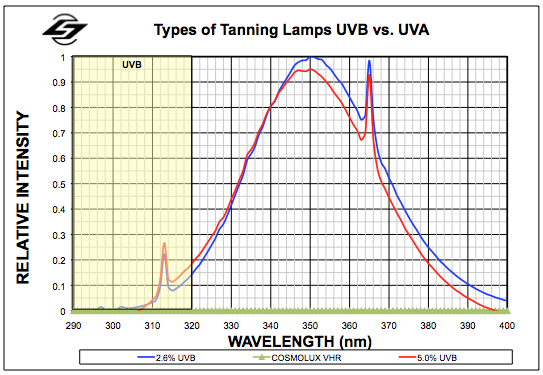
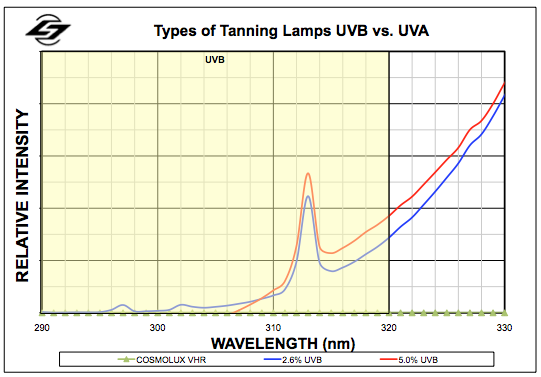
Downloads
Learn more about our revolutionary tanning lamp technologies by downloading our brochure, A History of Innovation.
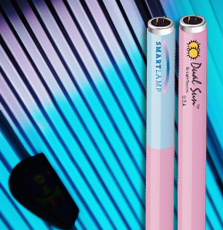
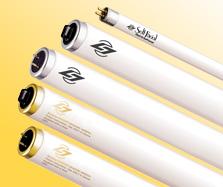
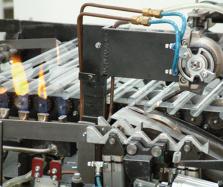

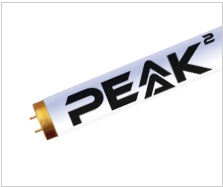

(A) “Contraindication: This product is contraindicated for use on persons under the age of 18 years.”
(B) “Contraindication: This product must not be used if skin lesions or open wounds are present.”
(C) “Warning: This product should not be used on individuals who have had skin cancer or have a family history of skin cancer.”
(D) “Warning: Persons repeatedly exposed to UV radiation should be regularly evaluated for skin cancer.”


